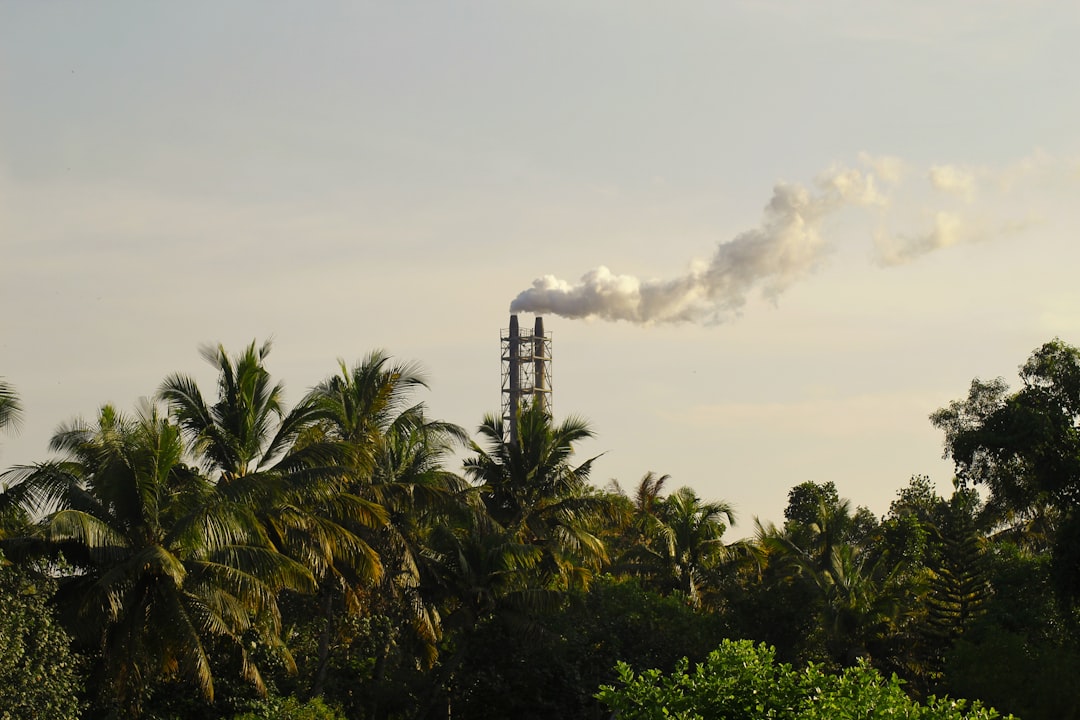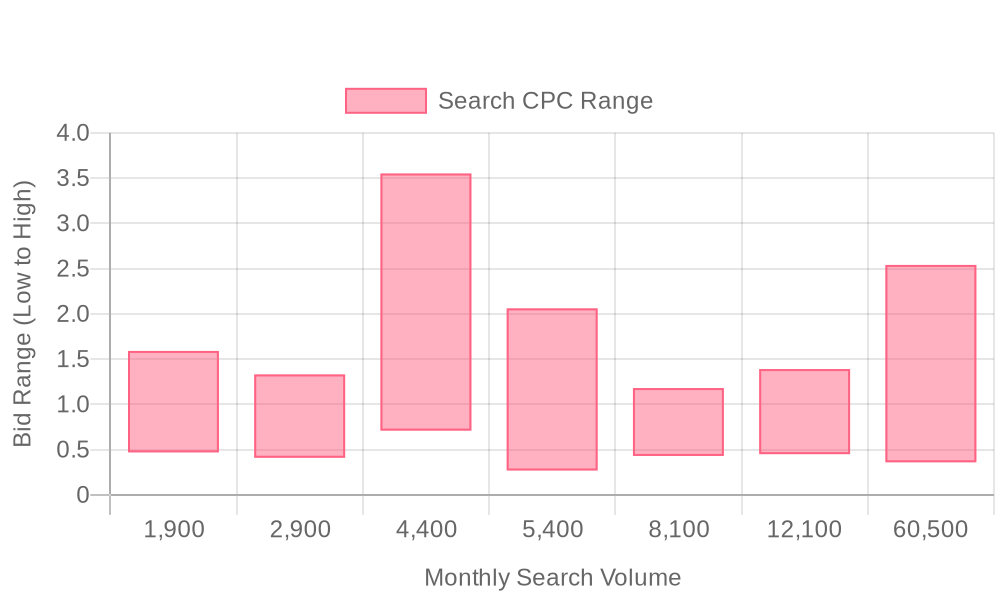
Supercharge your lead generation with a FREE Google Ads audit - no strings attached! See how you can generate more and higher quality leads
Get My Free Google Ads AuditFree consultation

No commitment
Supercharge your lead generation with a FREE LinkedIn Ads audit - no strings attached! See how you can generate more and higher quality leads
Get My Free Google Ads AuditFree consultation

No commitment
Supercharge your lead generation with a FREE Meta Ads audit - no strings attached! See how you can generate more and higher quality leads
Get My Free Google Ads AuditGet My Free LinkedIn Ads AuditGet My Free Meta Ads AuditFree consultation

No commitment
Supercharge your lead generation with a FREE Google Ads audit - no strings attached! See how you can generate more and higher quality leads
Get My Free Google Ads AuditFree consultation

No commitment
In today's complex marketing landscape, effective B2B marketing requires a strategic mix of both online and offline channels working in concert. Online channels like social media build digital brand awareness, email marketing nurtures ongoing relationships, and SEO drives organic visibility. Meanwhile, offline channels such as trade shows generate face-to-face connections, direct mail creates tangible touchpoints, and industry publications establish thought leadership. Within this integrated ecosystem, Google Ads plays a critical middle-funnel role by capturing high-intent prospects at the exact moment they're searching for solutions—effectively bridging the gap between broader awareness efforts and your sales process. For Google Ads for Carbon Products businesses, Google Ads represents a powerful opportunity to bridge online and offline marketing efforts: Intercept decision-makers at their precise moment of need, whether they're following up after a trade show or responding to a direct mail piece. Target with precision based on technical specifications and specialized terminology unique to your industry. Measure ROI completely by tracking from click to quote to closed deal, connecting digital touchpoints with offline sales. Complement other channels through remarketing to trade publication readers, event attendees, and digital audiences alike.

Organizations in the carbon products sector are facing heightened demand for transparency, sustainability, and measurable impact in their marketing activities. Generating high-value leads through digital channels requires a precise, data-driven approach that aligns with both performance and environmental goals. For deeper insights on marketing attribution and analytics, explore the Sona blog.
Google Ads has evolved to meet these challenges, offering robust tools such as carbon footprint reporting and audience segmentation that enable marketers to reach eco-conscious buyers while tracking their campaigns' environmental impact. By leveraging real-time audience data and connecting insights from ad engagement to CRM platforms, B2B teams can optimize spend, personalize outreach, and demonstrate a commitment to green advertising practices.
A step-by-step framework ensures that each stage of campaign execution is both results-oriented and environmentally responsible. From keyword research to conversion tracking and sustainability reporting, the process integrates advanced measurement capabilities and continuous feedback, empowering revenue teams to capture demand while supporting corporate responsibility objectives. If you're ready to take action, get started for free with Sona and elevate your lead generation efforts while advancing your sustainability goals.
Efficient advertising is essential for brands in the carbon products sector to reach decision-makers and drive demand in a crowded, technical market. Google Ads provides unmatched access to high-intent B2B audiences searching for solutions related to carbon emissions reduction, sustainable materials, and industrial decarbonization.
The platform’s ability to deliver measurable, data-driven results gives revenue teams the precision needed to optimize spend and attribute ROI across complex buying journeys. As sustainability becomes a primary decision factor for procurement and partnerships, brands advertising carbon products must also demonstrate environmental responsibility in their digital campaigns by leveraging carbon footprint reporting for Google Ads. For marketing teams seeking to unify campaign performance, Sona makes it easy to reveal which companies are engaging and tie digital efforts to real business outcomes.

Each of these campaign types serves distinct objectives within the carbon products sector. By integrating advanced data unification and real-time audience insights, marketers can ensure that every campaign is optimized for both performance and sustainability impact, aligning digital investments with broader environmental goals. Ready to elevate your campaign strategy? Get started for free with Sona.

B2B teams in the carbon products sector can uncover new growth by analyzing gaps in current digital marketing and account-based strategies. Reviewing campaign performance, audience engagement, and channel attribution reveals not only which segments convert but also where untapped potential lies. For an actionable framework to assess marketing’s impact on growth, explore this B2B marketing reports guide.
Pinpointing high-value accounts with real purchase intent requires more than just traffic analytics. Integrating real-time behavioral signals and buyer journey data allows teams to identify visitors who are actively researching carbon-neutral solutions or sustainable materials. This approach uncovers in-market companies and decision-makers, providing a foundation for more personalized, effective outreach with Sona.
Organizations seeking to maximize their presence in eco-conscious markets should leverage unified data to map the full customer journey. This enables granular segmentation, such as targeting enterprises pursuing net-zero initiatives or manufacturers aiming to reduce supply chain emissions. With enriched intent signals, marketers can adjust spend to prioritize high-likelihood buyers and streamline their retargeting strategies. For teams ready to operationalize unified data and act on real-time insights, get started for free with Sona.
Growth also comes from recognizing emerging demand in related sectors. Monitoring shifts in policy, regulatory requirements, or sustainability reporting standards can signal new opportunities for carbon product vendors. Tying ad campaign data to these external trends helps teams proactively create messaging and offers that resonate with evolving buyer priorities, positioning your company as a trusted partner in sustainable innovation.

Audience segmentation in the carbon products sector enables precise targeting of organizations and individuals with a demonstrated interest in sustainability, environmental compliance, and low-emission solutions. Marketers leveraging segmentation can align messaging with the unique pain points of buyers concerned with the carbon footprint, regulatory requirements, and green innovation, ensuring ad spend reaches the most qualified prospects.
When segmentation data is unified across CRM, website, and enrichment sources, audience lists remain current as leads move through the buying journey. Syncing enriched audiences directly into Google Ads enables real-time targeting updates, ensuring that only actively engaged accounts receive budget allocation. This creates a closed-loop process where every audience segment is activated based on the most recent behaviors and firmographic details, driving higher ROI for carbon product campaigns. For deeper insights into the power of segment-based targeting and its impact on campaign performance, review strategies outlined in retargeting strategies.
Ready to optimize your carbon product campaigns? Get started for free with Sona.

| Industry | Keyword | Monthly Search Volume | Competition Level | Low Bid | High Bid |
| Carbon Products | co2 alarm | 1900 | HIGH | 0.47 | 1.59 |
| Carbon Products | zipp 303 firecrest | 2900 | HIGH | 0.41 | 1.33 |
| Carbon Products | co2 sensor | 4400 | HIGH | 0.71 | 3.55 |
| Carbon Products | carbon fiber sheets | 5400 | HIGH | 0.27 | 2.06 |
| Carbon Products | carbon dioxide detector | 8100 | HIGH | 0.43 | 1.18 |
| Carbon Products | co2 detector | 12100 | HIGH | 0.45 | 1.39 |
| Carbon Products | carbon fiber | 60500 | MEDIUM | 0.36 | 2.54 |
A data-driven keyword strategy is essential for performance marketers focused on carbon products. Prioritizing high-intent, industry-specific terms ensures campaigns reach decision-makers researching eco-friendly materials, sustainability solutions, and carbon footprint management. For deeper insight into optimizing campaign strategies, visit the blog on B2B marketing reports.
For B2B demand generation, include transactional keywords such as “buy carbon offsets for business,” “carbon neutral advertising services,” and “corporate carbon footprint calculator.” Layer in long-tail terms like “Google Ads carbon footprint calculator for manufacturers,” “sustainable marketing strategies for carbon products,” and “emission tracking for digital ads.” To explore how Google’s reporting tools support this approach, review this overview of Google Ads' carbon calculator tool.
Targeting should reflect real market demand and user intent. Key terms for Google Ads campaigns include:
By integrating these target terms, marketing teams can attract organizations actively seeking solutions to lower their environmental impact, comply with new sustainability regulations, and demonstrate ESG progress through digital advertising. Tools that unify intent data and real-time campaign insights support ongoing keyword optimization for maximum relevance and ROI. To see how you can start optimizing your campaigns, get started for free with Sona.
Precise keyword selection forms the backbone of effective Google Ads for carbon products. Begin by researching terms that directly reflect buyer intent, such as "carbon offset solutions," "carbon footprint calculators," and "sustainable advertising services." Leverage search volume trends and competitor benchmarks to prioritize keywords that signal purchase readiness or interest in environmentally friendly offerings. To further refine your strategy, consult this guide to calculating TAM, SAM, and SOM for strategic B2B growth.
As your campaign matures, refine these keyword lists using real-time intent data. By integrating search behavior and site engagement signals, you can continuously update your targeting to reflect the evolving interests of both known and anonymous visitors. For more information on the Google Ads carbon calculator tool and its benefits, review this overview of Google Ads’ carbon calculator.
Audience segmentation is essential for tailoring messaging and maximizing relevance. Segment prospects by factors such as company size, industry, job function, and historical onsite behavior. For carbon product campaigns, additional layers—like sustainability certifications or prior engagement with green content—drive more personalized outreach. Explore how to build and sync precise audience segments for hyper-personalized ad targeting.
Using unified go-to-market data, marketers can identify visitors at the account and individual level, even when they have not yet filled out a form. Syncing enriched audience data directly into Google Ads ensures that segments automatically refresh as leads progress through the funnel. This reduces wasted spend and boosts efficiency by focusing ad delivery on the most engaged, sustainability-minded buyers. For a deeper look at audience segmentation and activation, browse the collection of actionable B2B playbooks.
The creative component of your campaign should showcase your commitment to green advertising practices and carbon-neutral outcomes. Use clear, benefit-driven language that appeals to decision-makers focused on emission tracking for ads and eco-friendly ad campaigns. Visuals should reinforce credibility—think certification badges and data-backed sustainability claims. See this YouTube explainer on Google Ads’ carbon footprint reporting tool for inspiration on communicating sustainability.
Dynamic creative optimization allows you to test variations at scale, adjusting headlines and calls-to-action based on audience feedback. As real-time insights come in, pivot messaging to emphasize what resonates most with environmentally conscious B2B buyers, such as transparent reporting or integration with carbon footprint calculator solutions.
Robust conversion tracking is critical for understanding the true impact of your Google Ads campaigns. Implement granular conversion events that account for both online interactions (such as demo requests or whitepaper downloads) and offline actions (like sales calls or event attendance). Learn more about offline attribution strategies for maximizing ROI.
Synchronizing CRM and ad platform data enables advanced attribution modeling, helping you track the full customer journey from ad click to closed deal. When enriched lead and account data flow seamlessly between systems, you can measure how each touchpoint contributes to pipeline and revenue, not just clicks or impressions. For a closer look at conversion tracking and attribution, discover Sona’s Ad Conversions feature.
Once your campaign is live, continuous monitoring is essential to optimize both performance and sustainability metrics. Use native Google Ads tools and integrated sustainability reporting to track carbon emissions in digital marketing initiatives. Review the official Google Ads help guide on carbon footprint reporting for step-by-step instructions.
By correlating campaign activity with emissions data, you can identify high-performing segments that also align with sustainable marketing strategies. Make real-time budget shifts toward eco-friendly ad campaigns that deliver results with lower environmental impact, reinforcing your brand’s commitment to carbon neutral advertising and transparent emission tracking for ads. Ready to take action? Get started for free with Sona.

Expanding your reach in the carbon products sector requires precise audience targeting and a clear understanding of what motivates environmentally conscious buyers. B2B marketers can leverage advanced segmentation to focus spend on decision-makers at organizations actively pursuing sustainability initiatives, ensuring every impression counts toward revenue and impact goals.
By combining intent-based targeting, CRM-audience integration, advanced measurement, and environmental transparency, B2B teams can expand their presence and authority in the carbon products space while reinforcing a commitment to sustainable marketing strategies. To streamline your campaign management and audience targeting, get started for free with Sona.
As we wrap up our exploration of leveraging Google Ads for carbon products, it's clear that integrating sustainable practices into your advertising strategy is not just a trend but a necessity for forward-thinking businesses. By understanding how to measure and manage the carbon footprint of your campaigns, you can align your marketing efforts with broader environmental goals, making a positive impact while reaching your target audience effectively.
Throughout this article, we delved into the challenges of tracking emissions in digital advertising and examined key strategies for reducing your campaigns' environmental impact. We highlighted Google's tools that help businesses in the carbon sector optimize their advertising efforts for sustainability, ensuring that your brand not only meets its marketing objectives but also contributes to a greener planet.
Imagine the possibilities when you embrace these insights and take actionable steps toward more sustainable advertising. By doing so, you'll not only enhance your brand's reputation but also pave the way for a cleaner, more responsible future. Empower your business to make a meaningful difference while achieving your marketing goals.
To fully realize the potential of sustainable advertising practices, start for free to experience our platform's capabilities today. Let us help you unify your go-to-market data and drive impactful, eco-friendly insights that align with your business's environmental ambitions.
Google Ads' Carbon Footprint feature provides reporting tools to track the environmental impact of advertising campaigns, helping businesses measure their campaigns' emissions.
Businesses can use Google Ads' carbon footprint reporting tools to monitor the emissions generated by their advertising campaigns and make data-driven adjustments to align with sustainability goals.
The Carbon Footprint tool helps by providing insights into campaign emissions, allowing businesses to optimize their advertising strategies for lower environmental impact.
Google Ads offers precise targeting, audience segmentation, and carbon footprint reporting, which help carbon product businesses reach eco-conscious buyers and measure the environmental impact of their campaigns.
Google's first-party data is used to track and report advertising emissions, but the article does not specify the accuracy level of this data.
Advertisers can use audience segmentation, real-time data integration, and carbon footprint reporting to ensure their campaigns are environmentally responsible.
The article does not provide a direct comparison, but it highlights Google Ads' ability to integrate emissions tracking within its advertising platform for comprehensive campaign management.
Best practices include using precise targeting, audience segmentation, real-time insights, and emphasizing sustainability in ad creatives.
Businesses can use Google Ads to target high-intent buyers, integrate sustainability messaging in ads, track emissions, and optimize campaigns for environmentally conscious outcomes.
Join results-focused teams combining Sona Platform automation with advanced Google Ads strategies to scale lead generation

Connect your existing CRM

Free Account Enrichment

No setup fees
No commitment required

Free consultation

Get a custom Google Ads roadmap for your business
Join results-focused teams combining Sona Platform automation with advanced Meta Ads strategies to scale lead generation

Connect your existing CRM

Free Account Enrichment

No setup fees
No commitment required

Free consultation

Get a custom Google Ads roadmap for your business
Join results-focused teams combining Sona Platform automation with advanced LinkedIn Ads strategies to scale lead generation

Connect your existing CRM

Free Account Enrichment

No setup fees
No commitment required

Free consultation

Get a custom Google Ads roadmap for your business
Join results-focused teams using Sona Platform automation to activate unified sales and marketing data, maximize ROI on marketing investments, and drive measurable growth

Connect your existing CRM

Free Account Enrichment

No setup fees
No commitment required

Free consultation

Get a custom Google Ads roadmap for your business
Over 500+ auto detailing businesses trust our platform to grow their revenue
Join results-focused teams using Sona Platform automation to activate unified sales and marketing data, maximize ROI on marketing investments, and drive measurable growth

Connect your existing CRM

Free Account Enrichment

No setup fees
No commitment required

Free consultation

Get a custom Google Ads roadmap for your business
Over 500+ auto detailing businesses trust our platform to grow their revenue
Join results-focused teams using Sona Platform automation to activate unified sales and marketing data, maximize ROI on marketing investments, and drive measurable growth

Connect your existing CRM

Free Account Enrichment

No setup fees
No commitment required

Free consultation

Get a custom Google Ads roadmap for your business
Over 500+ auto detailing businesses trust our platform to grow their revenue
Our team of experts can implement your Google Ads campaigns, then show you how Sona helps you manage exceptional campaign performance and sales.
Schedule your FREE 15-minute strategy sessionOur team of experts can implement your Meta Ads campaigns, then show you how Sona helps you manage exceptional campaign performance and sales.
Schedule your FREE 15-minute strategy sessionOur team of experts can implement your LinkedIn Ads campaigns, then show you how Sona helps you manage exceptional campaign performance and sales.
Schedule your FREE 15-minute strategy sessionOur team of experts can help improve your demand generation strategy, and can show you how advanced attribution and data activation can help you realize more opportunities and improve sales performance.
Schedule your FREE 30-minute strategy sessionOur team of experts can help improve your demand generation strategy, and can show you how advanced attribution and data activation can help you realize more opportunities and improve sales performance.
Schedule your FREE 30-minute strategy sessionOur team of experts can help improve your demand generation strategy, and can show you how advanced attribution and data activation can help you realize more opportunities and improve sales performance.
Schedule your FREE 30-minute strategy sessionOur team of experts can help improve your demand generation strategy, and can show you how advanced attribution and data activation can help you realize more opportunities and improve sales performance.
Schedule your FREE 30-minute strategy session





Launch campaigns that generate qualified leads in 30 days or less.
